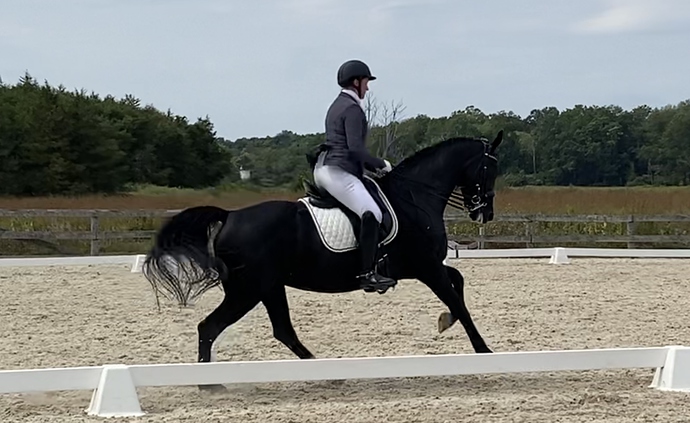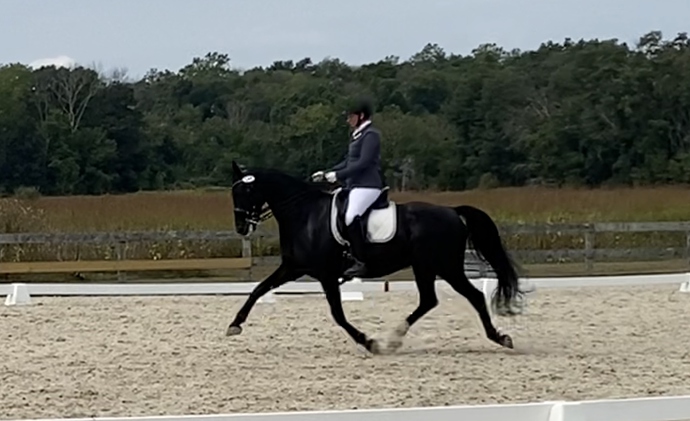"It’s with Liwilarda, Verdades’ dam, that this pedigree takes an unusual turn. Faith Fessenden, former KWPN-NA judge and longtime chair of KWPN-NA’s Education Committee, weighs in: “Through Liwilarda, we see the influence of the Dutch Harness Horse in Verdades’ pedigree. Dutch Harness Horses are carriage horses with high knee action, developed some generations back with influence from the Gelders Horse.” The Gelders Horse is a heavier warmblood type originally bred for both versatility and style: these horses needed the strength and stamina to work farms but also enough refinement and action to be stylish carriage horses. Fessenden says it’s not at all unusual for Gelders to influence the breeding of modern Dutch Warmbloods, but it is somewhat exceptional to have this much Harness Horse influence so close in the pedigree of an Olympic dressage horse. Fessenden explains, “Liwilarda’s sire, Goya, brings the stallion Oregon to the table—five times if you go back seven generations. Oregon was a strongly built chestnut with sturdy legs and feet, with lots of white, impressive in type and movement. He became the foundation stallion for the classic Gelders Horse. Goya’s grandsire, Renovo, was the successor to that accolade as the modern Gelders/Harness Horse foundation stallion. Renovo, a bay, was well built, refined, handsome and brought more elegant and light-footed movement. His sire, Cambridge Cole, was a well-bred English Hackney, which combined well with the classic Gelders Horse.”

 So cute.
So cute.
